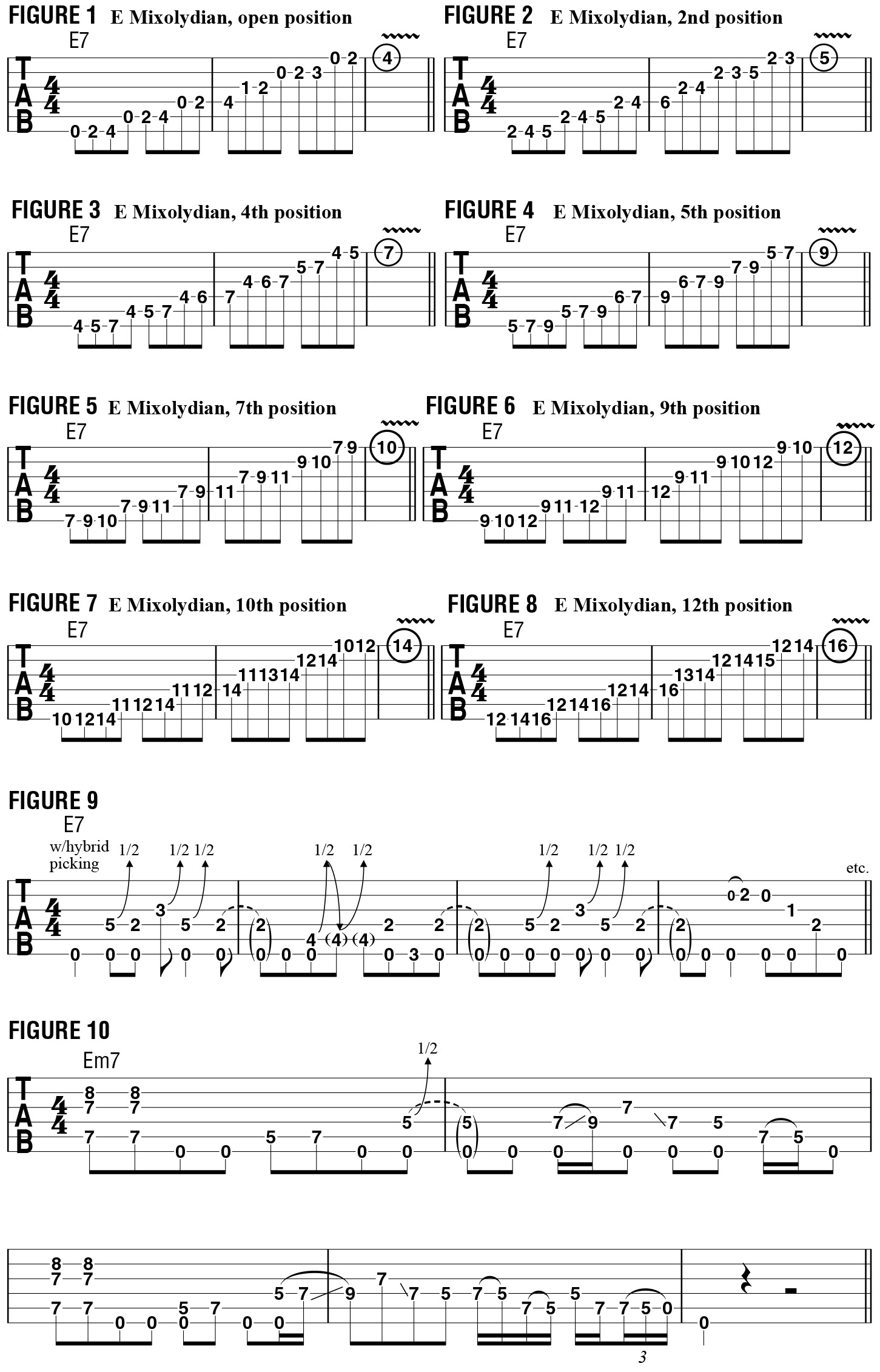E-Z Does It: Delta Blues-Style, Drone-Based Ideas in the Key of E
This month, we’ll conclude our exploration of drone-based riffing and soloing approaches and use the open low E string as our drone while playing a variety of melodic ideas over it. While our previous drone investigations looked at the keys of A and G, the key of E is probably the most commonly used key for drone-type licks in both rock and blues music.
Sticking with the bluesy vibe of the previous columns, the scale we will use for our melodic explorations in this lesson will be the E Mixolydian mode (E F# G# A B C# D). This mode best “describes” the dominant seventh sound so closely associated with blues music, as the chord tones of E Mixolydian, the first, third, fifth and seventh notes of the scale—E G# B D, or 1 maj3 5 b7—create the sound of an E7 chord when played together.
It is very beneficial—actually, essential—to memorize the scale pattern of E Mixolydian, and the best way to do this is to learn it in every available fretboard position. FIGURE 1 shows E Mixolydian played in first, or “open,” position, and FIGURES 2–8 illustrate other fingerings for the mode in successively higher positions. Practice and memorize these patterns.

FIGURE 9 presents a riff-type idea that’s based on E Mixolydian and incorporates the open low E string as a drone/pedal tone. I employ hybrid picking (pick-and-fingers technique) throughout, which facilitates sounding the open low E note and the melodic pitches on the higher strings simultaneously. Notice that the majority of the melodic line is played on the D and A strings, with brief use of the G and B. Sticking with the wound bass strings makes a riff like this sound “heavier,” which is ideal for achieving a hard-driving blues or blues-rock feel.
FIGURE 10 is more of a rock-type lick built from a steady low-E drone/pedal tone. I begin by flatpicking conventionally, but at the end of bar 1, I switch to hybrid picking in order to make the melodic notes on the higher strings stand out as much as possible, and this technique continues for bar 2. Bars 3 and 4 are performed in a similar manner, moving from standard flatpicking back into hybrid picking.
Get The Pick Newsletter
All the latest guitar news, interviews, lessons, reviews, deals and more, direct to your inbox!
Guitar World Associate Editor Andy Aledort is recognized worldwide for his vast contributions to guitar instruction, via his many best-selling instructional DVDs, transcription books and online lessons. Andy is a regular contributor to Guitar World and Truefire, and has toured with Dickey Betts of the Allman Brothers, as well as participating in several Jimi Hendrix Tribute Tours.
“There are so many sounds to be discovered when you get away from using a pick”: Jared James Nichols shows you how to add “snap, crackle and pop” to your playing with banjo rolls and string snaps
Don't let chord inversions bamboozle you. It's simply the case of shuffling the notes around








![Joe Bonamassa [left] wears a deep blue suit and polka-dotted shirt and plays his green refin Strat; the late Irish blues legend Rory Gallagher [right] screams and inflicts some punishment on his heavily worn number one Stratocaster.](https://cdn.mos.cms.futurecdn.net/cw28h7UBcTVfTLs7p7eiLe.jpg)


